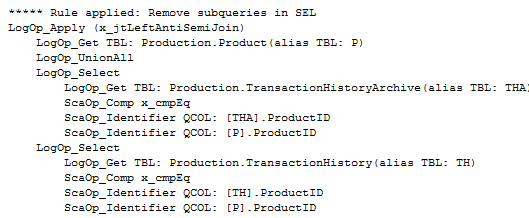

Let’s build a function that computes a logarithm: demo=# CREATE OR REPLACE FUNCTION ld(int) RETURNS numeric AS $$ SELECT log(2, $1) $$ LANGUAGE 'sql' CREATE FUNCTION demo=# SELECT ld(1024) ld - 10.0000000000000000 (1 row) To the greatest extent possible, function calls should be minimized in order to speed up the query.

The concept of function inlining is another crucial tactic. Read more Oracle AWR data storage and collection frequency optimization. Watch what transpires as this process continues: Demonstration: SELECT * FROM generate_series(1, 10) AS x WHERE x = 7 + 1 x - 8 (1 row) Explaination: SELECT * FROM generate_series(1, 10) AS x WHERE x = 7 + 1 QUERY PLAN:. PostgreSQL constant foldingĬonstant folding is one of the easier things to describe. There is a lot more going on, but it makes sense to start with the fundamentals in order to fully comprehend the procedure. Please take note that the methods listed here are by no means exhaustive. So let’s take a tour of the PostgreSQL optimizer and learn about some of the key strategies it employs to accelerate queries. We have made the decision to provide users with some insight into what actually occurs behind the scenes because the operation of the optimizer itself continues to be a mystery to many people.

PostgreSQL uses a cost-based query optimizer, just like any high-end relational database, to try to make your SQL queries as effective and quick to execute as possible. Feature article NPMD solutions play a key role in helping IT ops support increasingly complex technologies and services with network visibility, detection of performance issues and root cause analysis.The first of its kind, DPM provides decision support for each stage of the performance problem lifecycle DPM DPM is an innovative platform for IT production database performance management.Hopefully, this article helped you understand more about joins. BTree indexes are very powerful and have a wide range of applications. The planner can combine indexes for other operations like Scans and significantly speed up queries.This is typically called a "cartesian product." SELECT This query might not make sense in the real world, but you can draw parallels where you might join based on this condition. Let's do a query where we want to select all data from both tables on the condition that the ID of the user_info table is lesser than the payment_info table. An index cannot really help much in this case, since the building of the hash table involves a sequential scan (a scan of all the rows present in the table). A planner usually decides to do a hash join when the tables are more or less the same size and the hash table can fit in memory. Building the hash table is an added cost, but remember that the lookup (based on a good hash function) is effectively O(1) in terms of asymptotic complexity. We'll then use this table to scan the outer table, payment_info. In our example, we will create the hash table on the column id of the table user_info. Hash join.Īs the name suggests, a hash join builds a hash table based on the join key. Running an explain for this query would generate a hash join. JOIN payment_info on user_info.id = payment_info.id Let's run a simple query that combines the data from two tables. SET max_parallel_workers_per_gather = 0 įinally, we will look at parallelization in joins in the dedicated section. Similar to the article on scan nodes, we will set max workers to zero to make our plans look simpler. We will run several queries and use EXPLAIN to inspect their query plan. Let's start querying the table where we have created and loaded the data. COPY user_info(id, phone, name, job, address) FROM '/path/to/csv' DELIMITER ',' ĬOPY payment_info(id, account_number, bank_country, intl_account_number) FROM '/path/to/csv' DELIMITER ',' Ĭopying the user info. I created a million rows using the above script and loaded the data into PostgreSQL using the below commands.
Postgres anti join generator#
User_info = f"'' \n"įake data generator using faker python library. # Change this range to whatever value you likeĪddress = faker.address().replace(',', '').replace('\n', '')
Postgres anti join code#
Below is the code used to generate the CSV files for data. We are going to use the faker library in Python to generate some fake user data. Queries for CREATE TABLE are given below. The id column connects them, and they have a one-to-one relationship. These tables are primarily for testing and self-explanatory in what they store. Generated using the Arctype ERD template in Figma. Let's have two tables in our data that have the following structure. To understand how PostgreSQL prepares the plans for join queries, we need to set up data for experimentation.


 0 kommentar(er)
0 kommentar(er)
